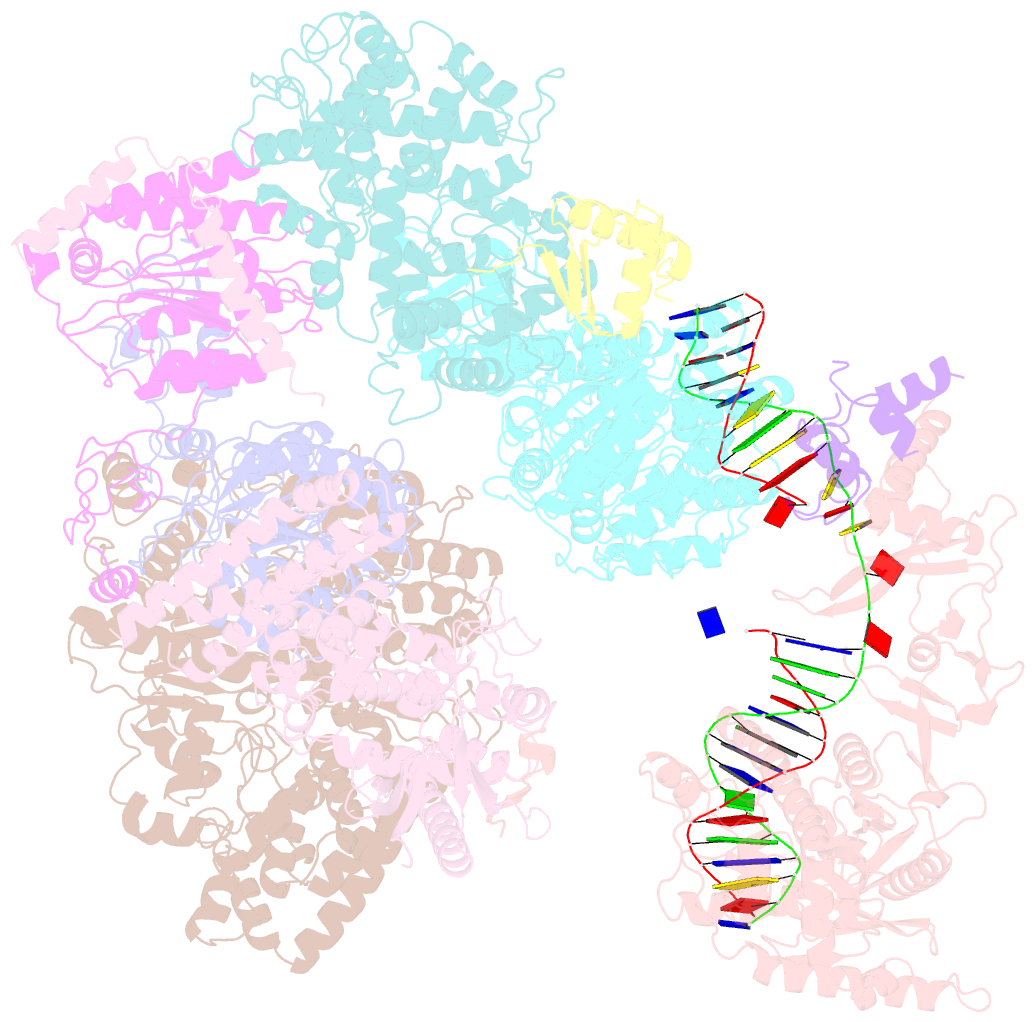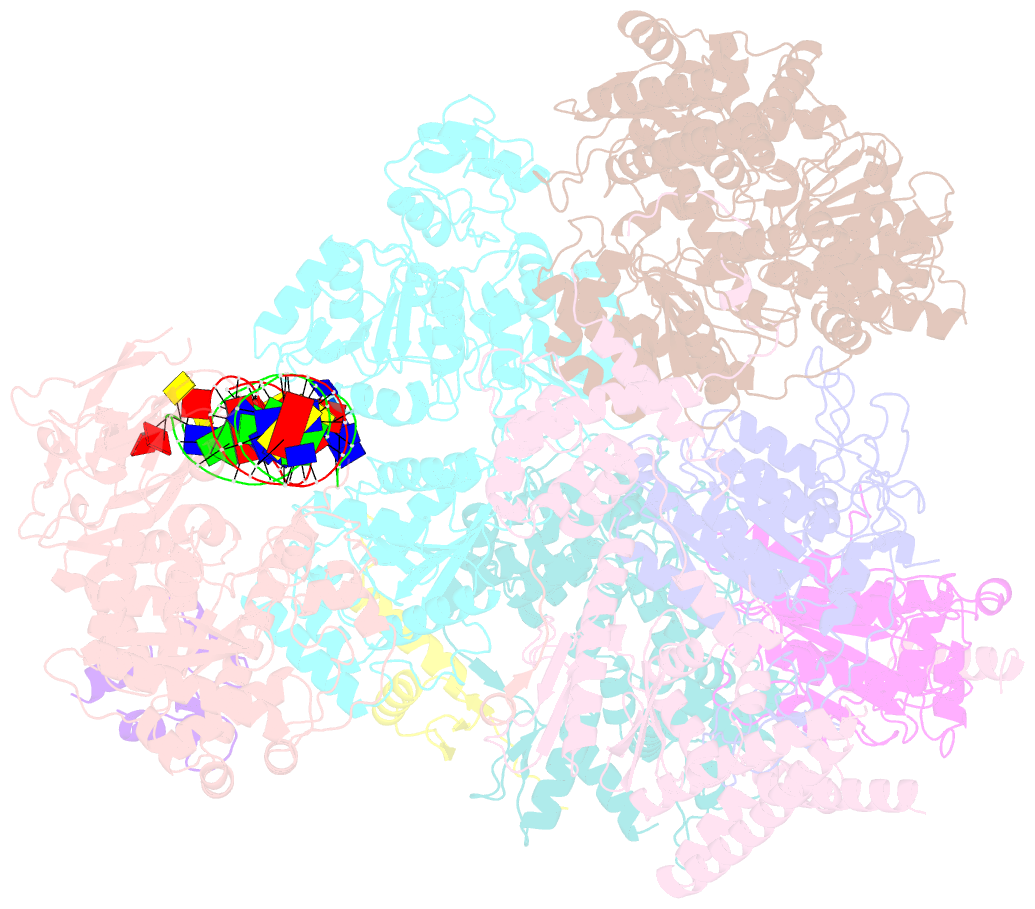Summary information and primary citation
- PDB-id
-
7k04;
DSSR-derived features in text and
JSON formats; DNAproDB
- Class
- nuclear protein-DNA
- Method
- cryo-EM (9.25 Å)
- Summary
- Structure of tfiih-rad4-rad23-rad33-DNA in DNA
opening
- Reference
-
van Eeuwen T, Shim Y, Kim HJ, Zhao T, Basu S, Garcia BA,
Kaplan CD, Min JH, Murakami K (2021): "Cryo-EM
structure of TFIIH/Rad4-Rad23-Rad33 in damaged DNA
opening in nucleotide excision repair." Nat
Commun, 12, 3338. doi: 10.1038/s41467-021-23684-x.
- Abstract
- The versatile nucleotide excision repair (NER) pathway
initiates as the XPC-RAD23B-CETN2 complex first recognizes
DNA lesions from the genomic DNA and recruits the general
transcription factor complex, TFIIH, for subsequent lesion
verification. Here, we present a cryo-EM structure of an
NER initiation complex containing Rad4-Rad23-Rad33 (yeast
homologue of XPC-RAD23B-CETN2) and 7-subunit coreTFIIH
assembled on a carcinogen-DNA adduct lesion at 3.9-9.2 Å
resolution. A ~30-bp DNA duplex could be mapped as it
straddles between Rad4 and the Ssl2 (XPB) subunit of TFIIH
on the 3' and 5' side of the lesion, respectively. The
simultaneous binding with Rad4 and TFIIH was permitted by
an unwinding of DNA at the lesion. Translocation coupled
with torque generation by Ssl2 and Rad4 would extend the
DNA unwinding at the lesion and deliver the damaged strand
to Rad3 (XPD) in an open form suitable for subsequent
lesion scanning and verification.





